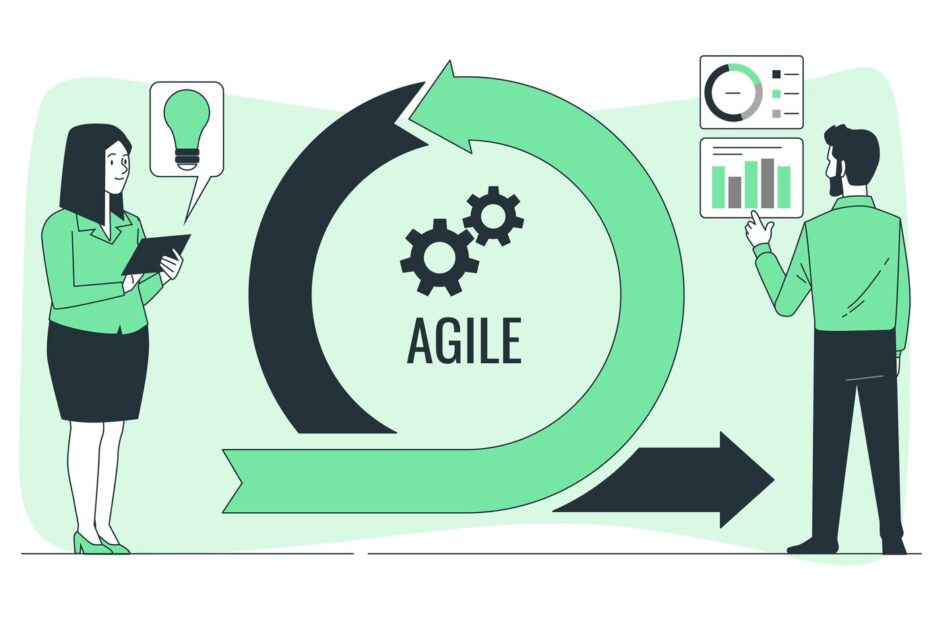In the competitive world of mobile and web applications, speed, flexibility, and user satisfaction are critical success factors. Today’s businesses aren’t just looking for an app they’re looking for an efficient, scalable, and user-friendly solution that meets their unique needs. That’s why many leading app developer company rely on the Agile methodology to manage projects and deliver superior products.
In this article, we’ll explore how an app developer company implements Agile, the step-by-step process, the tools they use, and why this approach leads to better apps and happier clients.
What Is Agile Development?
Agile development is a modern software development approach based on iterative progress, where requirements and solutions evolve through collaboration between cross-functional teams and stakeholders.
Unlike traditional Waterfall methods, where development flows in a linear sequence (requirements → design → implementation → testing → deployment), Agile is adaptive. It encourages small, frequent releases that allow for regular feedback, testing, and improvements.
The Core Values of Agile (from the Agile Manifesto):
Individuals and interactions over processes and tools
Working software over comprehensive documentation
Customer collaboration over contract negotiation
Responding to change over following a fixed plan
Why Do App Developer Companies Use Agile?
App Developer Company involves complex tasks, changing client requirements, and constant user feedback. Agile empowers development teams to respond quickly to these changes and maintain product quality throughout the process.
Benefits for the Company and Client:
Early delivery of features (MVPs or Beta versions)
Improved collaboration across development, design, and QA teams
Constant visibility into progress through sprint demos and reports
Minimized risk due to frequent releases and early issue detection
Client satisfaction, thanks to regular feedback loops
Agile in Action: The Workflow of an App Developer Company
Let’s take a closer look at how a typical app developer company uses Agile to manage a project from start to finish.
1. Project Discovery & Requirement Gathering
Before jumping into development, the company holds discovery sessions to fully understand the client’s needs. Key outcomes from this phase include:
Business objectives and goals
Target audience/user personas
Feature list and prioritization (product backlog)
Technical and design requirements
Definition of Done (DoD)
2. Team Formation and Role Assignment
Agile teams are cross-functional and may include:
Product Owner – Represents the client, defines features, and prioritizes the backlog
Scrum Master or Agile Coach – Facilitates the Agile process, removes roadblocks
Developers – Backend, frontend, or mobile developers
Designers – UX/UI experts
QA Testers – Ensure the app is bug-free and user-friendly
3. Sprint Planning
Each project is broken into sprints (typically 1 to 2 weeks long). During sprint planning:
The team selects high-priority tasks from the backlog
Tasks are broken into smaller, actionable units
Time and resources are estimated
Goals are clearly defined
4. Daily Stand-Up Meetings
Every day, the team gathers for a 15-minute stand-up meeting where they:
Share what they did yesterday
Outline what they plan to do today
Identify any blockers
These meetings ensure transparency and promote accountability within the team.
5. Design, Development & Continuous Testing
Agile promotes parallel workflows:
Designers collaborate with developers to create mockups, wireframes, and UI components.
Developers start building features in small increments.
QA testers begin testing as soon as a feature is ready (not waiting until the end).
Testing includes:
Unit testing
Integration testing
Automated testing
Manual QA for edge cases and UX
6. Sprint Review (Demo Day)
At the end of each sprint, the team showcases the working product to the client/stakeholders. This is a chance for:
The client to provide feedback
The team to validate that the delivered features meet expectations
Adjustments to be made before the next sprint
7. Sprint Retrospective
After the review, the team reflects on the sprint:
What went well?
What could be improved?
What should we do differently next time?
This reflection drives continuous improvement.
Agile Tools Commonly Used by App Developer Company
To manage Agile processes effectively, most companies use a combination of these tools:

Real-World Example: Agile in App Developer Company.
Let’s say a client wants to build a food delivery app with key features like real-time order tracking, payment integration, and location-based searches.
In Agile:
Sprint 1: Focus on user registration, login, and onboarding.
Sprint 2: Add restaurant browsing and search functionality.
Sprint 3: Integrate payment gateway and order checkout.
Sprint 4: Implement order tracking with real-time updates.
With each sprint, the client receives a working version to test and provide feedback. Changes like improving UI elements, adding a loyalty system, or tweaking delivery settings can be made along the way without derailing the entire project.
Agile vs. Waterfall in App Development

Final Thoughts
In an industry where user expectations evolve rapidly and market competition is fierce, Agile gives app developer companies a distinct advantage. By breaking development into manageable chunks, involving clients throughout the process, and emphasizing frequent testing, Agile helps deliver better apps faster and with fewer surprises.
Whether you’re building an MVP or scaling an existing platform, working with an Agile-driven app developer company ensures that your product is not only functional but also adaptable, user-focused, and aligned with your business goals.
